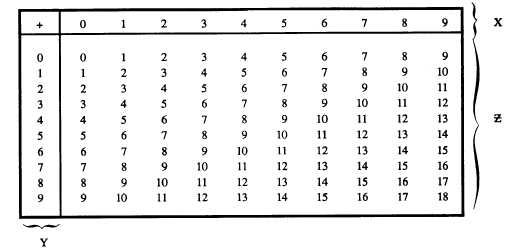1-8
Table 1-1. —Decimal Addition Table
To add 5 and 7 using the table, first locate one number in the X row and the other in the Y column.
The point in field Z where the row and column intersect is the sum. In this case the sum is 12.
SUBTRACTION.The following definitions identify the basic terms you will need to know to
understand subtraction operations:
SUBTRACTTo take away, as a part from the whole or one number from another
MINUENDThe number from which another number is to be subtracted
SUBTRAHENDThe quantity to be subtracted
REMAINDER, or DIFFERENCEThat which is left after subtraction
BORROWTo transfer a digit (equal to the base number) from the next higher order column
for the purpose of subtraction.
Use the rules of subtraction and subtract 8 from 25. The form of this problem is probably familiar to
you:
It requires the use of the borrow; that is, you cannot subtract 8 from 5 and have a positive difference.
You must borrow a 1, which is really one group of 10. Then, one group of 10 plus five groups of 1 equal
15, and 15 minus 8 leaves a difference of 7. The 2 was reduced by 1 by the borrow; and since nothing is
to be subtracted from it, it is brought down to the difference.
Since the process of subtraction is the opposite of addition, the addition table 1-1 may be used to
illustrate subtraction facts for any number system we may discuss.



